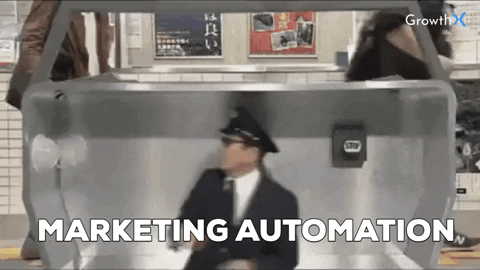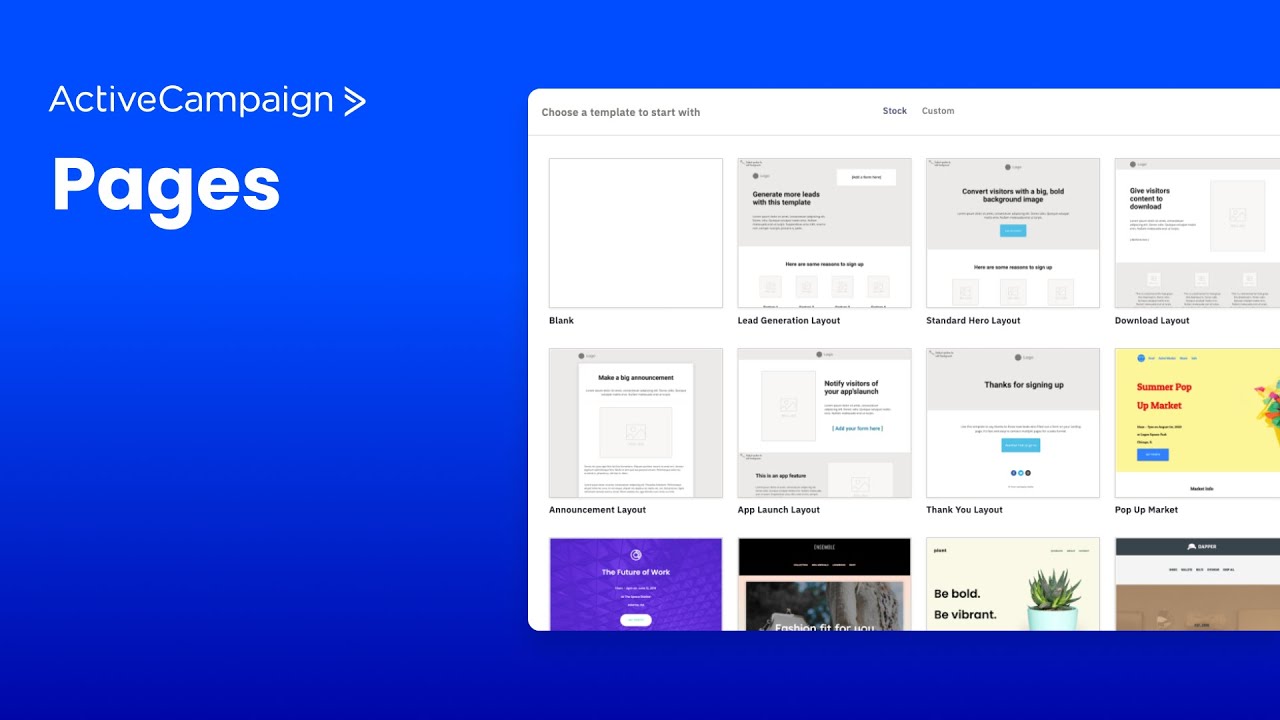The 3 Biggest Disasters in CRM History
Customer Relationship Management, or CRM, sounds new-fangled. Still, although the term ‘CRM’ is certainly new, the concept is as old as time itself…well, certainly as old as trade is, the first recorded example of which happened over 20,000 years ago in what is now known as Papua New Guinea.
As an entrepreneur, you know what it takes to be a successful trader and maintain a thriving business - and you might not be surprised to learn that very little has changed since trading began. Even all those many moons ago, those early traders would have known that what was important was knowing what they had to sell, who wanted to buy it, and where those buyers could be found. And I’m sure they understood that selling to an existing customer was easier than finding a new one and that those relationships needed to be carefully nurtured.
Of course, we don’t know how their trading and customer information was stored - whether it was committed to memory to keep it safe from competitors or whether customer lists were maintained but, regardless, when you consider the risks involved - particularly in travel - during the earliest days of trading, it stands to reason that the earliest entrepreneurs were experts in marketing and sales and had excellent customer knowledge.
Throughout the years, various methods of record-keeping and accounting have been developed, eventually leaping the first commercial computer systems. By the late 1950s/early 60s, any business worth it's salt and concerned about keeping records (and had plenty of money to hand!) was eagerly adopting Automation. Of course, as the price of computers fell dramatically, even the smallest of businesses could afford to get on board, so by the 70s, Automation was all the rage.
While initially primarily used for keeping customer lists and looking after accounts, it soon became obvious that automation could be used in other areas of business - particularly useful in sales - and so it wasn’t long before the digital version of CRM was born.
During the 80’s that the CRM revolution took off, with the invention of database marketing pioneered by Robert and Kate Kestnbaum changing the face of direct marketing. There’s no definitive answer as to who ‘invented’ modern CRM, but if we consider Kestnbaum’s contributions to the modern marketing world, we should probably give them the crown. The 1990s saw the emergence of many products designed to manage customer data, such as Siebel, Goldmine and Maximiser, who all provided off-the-shelf software that even small businesses could afford - yet had enough impressive features to attract the attention of huge multinationals. By the middle of the decade, customers were spoilt for choice, with CRM systems of all shapes and sizes flooding the market, and even more so with the advent of mobile and e-CRM in the late 90s.
You’d be forgiven for thinking that over 20 years later, the market for new CRM products is now at saturation point. But you’d be wrong. Ever-changing technology has allowed new software companies to develop new and inventive designs - largely buoyed by the rise of social media and smartphones and the need to interact with customers across their various social platforms.
So, in the grand scheme of things, CRM is old technology. Despite the ever-changing landscape of the system, the basic premise of CRM has always been about the same thing: managing relationships with your customers, allowing you to understand what they want and allowing you to provide it to them to deliver better customer satisfaction. A good CRM system will collect and manage all the information you could need relating to your customers, including what they’ve purchased in the past and their preferences. It then makes that information available to your sales and marketing, management, and customer service teams.
However, despite CRM undoubtedly being an asset to any business, large or small, it’s not foolproof, and CRM software efforts CAN fail to live up to your expectations…
Hershey's Bitter Experience In The Sweets Market
American chocolate manufacturer Hershey faced competition from all sides. Seeing its market share eroding, it naturally reached out to ERP and CRM providers to shape its client relations and boost its profits. However, things didn't go entirely to plan.
Hershey is a big company and believed they needed a large-scale solution. So they purchased a $112 million (£75 million) CRM system from Siebel. Unfortunately, this system proved too cumbersome and complex for Hershey's suppliers and production line. The stream of sweet treats halted, resulting in a frozen factory and thousands of disappointed customers.
Alongside a poor choice of a CRM system, Hershey also made a rookie timing error. Instead of working out a low-risk time of year to make wholesale changes, they timed their CRM implementation just before Halloween. Being one of the year's biggest chocolate binges made Hershey's CRM nightmare even more disastrous for the company.
Blackberry's Communications Breakdown
What happened to Blackberry is another of the biggest disasters in CRM history. Once upon a time, everyone had a Blackberry device to stay in touch with friends and colleagues. Nowadays, a Blackberry is merely a collector's item. One major factor in the firm's demise was a bad CRM implementation. In 2011, Blackberry experienced issues with its email services, resulting in freezes for users in some regions.
However, a localised crisis became a company-wide fiasco when users sought answers from Blackberry's help services. Instead of using CRM to send clear messages about what was wrong and what they were doing, Blackberry relied on Facebook, failing to realise how many customers were affected. That was the beginning of the end, and customers have abandoned Blackberry ever since.
British Airways' Twitter Fails
British Airways are well known for quality in-flight services and lousy customer service. One of the main reasons for this dodgy reputation is its long history of CRM failures. British Airways are infamous for its inability to use Twitter to connect with disgruntled customers. People take to their Twitter feed daily to broadcast their conversations with honest and automated British Airways support staff.
These Twitter broadcasts are rarely positive. One of the biggest problems with firms like British Airways is that they promise a great deal (24 hours a day customer service) yet often fail to deliver. They routinely take over 6 hours to respond to customer queries. Customers do what they do best and tweet about poor service. Before British Airways could do anything about it, news of their poor service went viral.
What Are The Possible Reasons For CRM Failures?
1. Your CRM project lacks focus. For your CRM project to be truly successful, it must follow a clear path to specific goals. Every member of your sales team needs to know your sales objectives inside out so that they understand them and can express them clearly and in measurable terms. Perhaps you want to increase sales or attract new customers…stay focused on that specific goal, and your CRM project stands much more of a chance of success.
2. You’re not committed. If everyone’s not on board with your CRM initiative - top management and the sales team - you’ve already set yourself up for a fall. Communication between teams is key if you want to avoid situations such as the sales team thinking that the whole process will only benefit management and make their work more arduous and time-consuming. When it comes to a lack of commitment to the CRM project within a business, the biggest problem will come from missing or wrong data, which will make your CRM system pretty pointless.
3. Thinking that CRM is only a technological process. CRM software is integral to your business’s customer relationship management - and most would say an essential one. However, CRM is so much more than software. Simply thinking of customer relations as something entirely software-related that can be left to the IT department to sort is a recipe for disaster. A successful CRM project will involve all of your business’s customer-facing processes and all of the departments involved in that, communicating with each other and using the CRM system as merely a technological tool that is part of the human process.
4. Your CRM system is not implemented correctly. Don’t think of your CRM system as a one-time implementation! Successful CRM projects and processes are going to depend on every team member becoming properly accustomed to it, and then providing an ongoing cycle of user feedback and analysis…as well as making sure the system is kept properly updated. If you want to keep your CRM relevant, these updates will be necessary, adding new functionality that will streamline workflow and keep your automated processes up to date.
What Is A Bad CRM?
Put, a ‘bad’ CRM system isn’t helping your sales team do the job you’re paying them to.
Here are Flowbird’s top signs that you might be using a ‘bad’ CRM system that doesn’t suit your business’s needs...
1. Your team doesn’t use it. It isn't worth a bean if your CRM system isn’t helping your sales team maintain positive customer relationships. Your salespeople will soon lose confidence in a tool that doesn’t offer useful insights they can use during the sales process. If you’ve employed a system that takes too much time and effort to enter and update data, it can’t surprise you that your sales reps stop seeing the point in a technology that is too time-consuming to use. Of course, you’ll get reps that put the effort in and use it - but at what cost? - probably at that of updating inconsistent information, leading to unreliable data, and rendering your CRM system pointless.
2. You’re missing sales opportunities. The whole reason you’re running a business is to make money; if you’re not making sales, it won’t be long before you run at a loss. If you have a bad CRM system that provides poor data, your sales reps could target the wrong types of customers or even pitch the wrong types of products to your existing customers. This will lead to missed sales opportunities, and your sales team will have no choice but to stop using a tool impeding their jobs.
3. Existing customer sales aren’t growing. Your existing customers are your most valuable resource, often coming back repeatedly. But if your CRM system isn’t effective, your sales reps will miss opportunities to grow those existing customer sales. A great CRM system will allow your team to see a customer’s entire history with your company, allowing you to move conversations with them from, ‘Can we help you with anything?’ to, ‘We notice you love product A, so we think you’d love product B…’ Without a good CRM system your sales reps are flying blind and using guesswork or memory to increase sales.
How to Avoid These Biggest Disasters In CRM
Hershey's expensive solution, Blackberry's confusing messaging, and British Airways' slow-moving customer help team - not the way you want to go. Avoid these biggest disasters in CRM: talk to Flowbird and develop a winning CRM strategy that is cost-effective and efficient.
Conclusion
Take the first step towards maximising your sales potential and achieving your goals with Flowbird as your Pipedrive implementation Partner. Contact us today to learn more and revolutionise your sales journey. Your success awaits – let Flowbird and Pipedrive propel your sales to new heights!
.png?width=50&height=50&name=Search%20(7).png)




